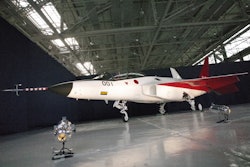These days manufacturing hums with connectivity. Products, processes and infrastructure — some physical, some virtual — all talk to each other.
Welcome to Informed Manufacturing, where processes interconnect and harmonize, and embedded sensors monitor product performance and serve up an array of details. Has your organization begun to ready its operations and processes? Your manufacturing supply chain is likely more prepared than you realize to begin the transition.
From buzz to real-world implementations
Informed Manufacturing is still in its early days, but companies are embracing the concept at a rapid rate. The movement goes by a variety of names. It’s known in some quarters as the Industrial Internet of Things (IIoT), and in others as Industrie 4.0, in reference to the German-led initiative for smart factories. The common denominator, however, is always the concept of intelligent connectivity.
The industry buzz around informed manufacturing is giving way to real-life implementations. For example, 3D printing is finding practical application in a variety of sectors, from testing prototypes and machinery parts to artificial limbs and even toys. At the concept level, manufacturers have built houses and cars using the technology.
What’s more, by integrating enterprise data with data from connected products and then applying analytics, companies today are not only cutting costs and boosting customer service, they are also developing innovative business models that let them transition from selling products to providing the product-as-a-service.
Our research indicates that while many companies are still unsure of when and how to embark on the Informed Manufacturing journey, they are often more ready for implementation than they think.
Here’s how your manufacturing can begin to take its first steps to generate information when, where and how it’s needed:
1. Maximize use of the data you already have. Most manufacturers have plenty of information in their systems that they can leverage more effectively. Applying advanced analytics to the data that already exists through ERP, for example, offers a cost-effective approach for acquiring much needed skills in analytics and pattern identifications.
Making the most of existing information not only builds organizational confidence in analytics, but it also demonstrates how analytics can benefit the business — all before you roll out more complex, sophisticated efforts.
Relatively simple business analytics solutions can benefit your organization in multiple ways:
- Eliminate dependence on ad-hoc manual reports and drastically reduce the time and effort spent on such activities.
- Empower field and front-line employees with real-time, on-demand data to better serve customers
- Highlight data errors and inconsistencies
- Prepare to manage data intelligently, and build the platform for scaling complexity and speed
2. Start experimenting with process enhancements. Launch a small-scale pilot project or two to allow your organization a phased-in, step-by-step approach to Informed Manufacturing. Embed sensors into select products, machines and plants. Then take your time to learn how to gather the data and apply business analytics to make meaning from it. Experiment with emerging technologies in development labs. Consider partnerships with innovative technology suppliers.
3. Examine tools for improving collaboration. Collaboration among supply-chain partners is at the heart of Informed Manufacturing. There are a number of tools on the market that help everyone from the factory floor to the C-suite stay in touch and build communities. Look for tools that serve up organizational knowledge on tap. For example, social business technologies such as Chatter, Yammer and Newsgator offer new platforms for information exchange and rich discussion.
In addition, manufacturers will need to develop a new talent pool beyond the standard technical skills in mechanical and electrical engineering. Examples of skill sets for Informed Manufacturing include analytics, data modeling and data visualization.
Cross-functional coordination also requires a new wave of leadership skills. Deriving insights from big data is key for managers. Senior leaders need to be able to translate insights into opportunities for value-add through new products, services and business models.
4. Investigate a large-scale supporting infrastructure. Connecting machines and networks across industries requires data centers, fiber networks and broadband. In addition to infrastructure, companies need to start integrating and deploying sensors into machines and factory floors, thereby optimizing energy consumption and enabling proactive maintenance of valuable assets.
Flexibility and scalability are key considerations in building infrastructure given the pace at which technology and regulations are evolving. Will your organization’s infrastructure allow it to adapt to evolving standards and requirements? Can it scale up and down quickly across different geographies and business units?
5. Explore the integration of product diagnostics into manufacturing and operations, as well as the integration of environmental and customer data. Flexible, adaptable manufacturing processes start with standardized data across the value chain. That means everything from data formats to barcodes and RFID tags.
6. Identify patterns by integrating product, customer and process data and then applying analytics. To truly understand and enhance product performance, manufacturers need to see the big picture. Implement tools to integrate unstructured data — from digital channels such as the Web, mobile and social media — with structured data from systems of record. In addition, tools such as social media analytics can help companies gain insights into consumer trends, brand sentiment and even service or quality problems.
Informed Manufacturing is not without its risks. For one thing, interoperability is a concern. While alliances such as ZigBee and the Industrial Internet Consortium have been established, universal standards have yet to evolve. There is no standard protocol for devices to talk to one another.
For another, cybersecurity is often cited in surveys as a top barrier to adoption of IoT-based technologies. Finally, many executives cite lack of clear business case as a reason for slow adoption.
Despite the concerns, however, Informed Manufacturing is forging ahead as the next industrial revolution. A pragmatic, phased approach will help manufacturers successfully navigate the complexities and overcome concerns.
Raj Radhakrishnan serves as Vice President and Head of North America Markets, Manufacturing and Logistics Practice at Cognizant. Badrinath Setlur leads Cognizant's Business Consulting’s Manufacturing and Logistics Practice.






















